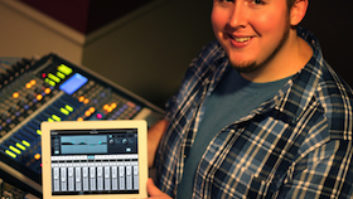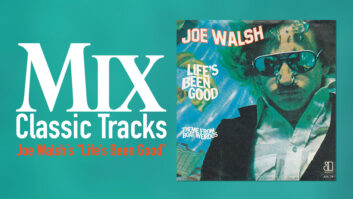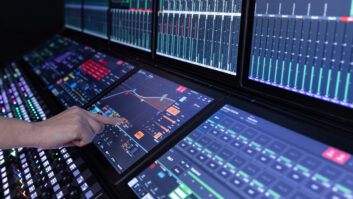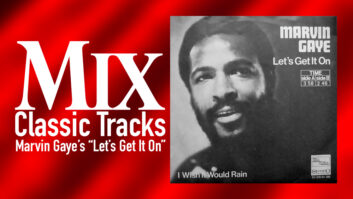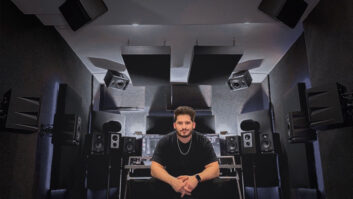Additional insights and observations shared by some of the interviewees in the Pro Sound News March, 2015 cover story, “Touchscreen Mixing Arrives.”
Alex Oana—co-creator of the Raven, Slate Pro Audio’s DAW GUI, the first multi-touch audio production system, unveiled in 2012—on the appeal of touchscreen mixing:
“What is important is having creative interaction with your audio that feels fulfilling. It gets you the results you want and the process is enjoyable. The opportunity is in creating tools that haven’t even been imagined yet. For example, in Apple’s iOS 7, they dropped the schemorphic concept of a control having a basis in a familiar physical world: a knob, a fader, a slider. That’s step one in realizing how else to react to digital information on a display.”
Ray Tantzen—Senior Product Manager for PreSonus’s StudioLive RM Series—on the timeless appeal of tactile faders and knobs:
“I don’t believe we’ll ever see physical faders go away. I think we’ll see a transformation of how the physical faders and hardware is built to incorporate more of the touchscreen technology. I’m an old-school mixing dude and I enjoy my hands on faders, but especially with the larger touchscreens, like a large Windows 8 touchscreen, you have a lot of real estate to control your mix. On the larger screens, it’s great. On the smaller iPad screens, it’s great for portability but I don’t like mixing a big show on the small screen.
“I think there’s a lot of folks out there that like physical, tactile control. You can put your hands down on the faders, listen to the mix, and move around the parameters. You can do the same thing on the touchscreen, but it’s a little different, isn’t it?
“But there are things you can do with a touchscreen that you just can’t do with a physical fader and a knob. In our software [bundled with StudioLive], we have parameter boxes; it shows the name of the parameter, a meter with the value of the parameter. When you touch it, it explodes into a giant slider that you can use to adjust the parameter. Then when you let go, it snaps back into the box. That’s not possible with physical faders, of course. Elsewhere, we have meters in the background with a touch fader, slightly transparent, so you can see through to the parameters. There are really cool things you can do that are beyond what physical controls can do.”
Tantzen on StudioLive RM Series customers:
“When we were doing beta development and testing, we worked with a local church; they had a StudioLive console and swapped it out with the RM and Windows 8 touchscreen computer. We’re dealing with primarily volunteers, so they aren’t necessarily tech-savvy folks. We were really surprised to find them more comfortable with making adjustments to things like Fat Channel effects on the touchscreen. They weren’t as comfortable changing things in Fat Channel on the console—making the change and listening for the change. On the touchscreen, there’s a giant EQ graph; they can grab it and get a visual indication of what that change is in the frequency response in addition to what they’re hearing.
“Another popular feature is called Filter DCA, which lets you control mixes with DCAs but also navigate view groups. The idea of doing away with ‘layers’ is appealing; for example, you can control the overall levels of the drums with this flex-fader type tool. It’s just another example of what you can do on a touchscreen that you can’t on a physical console.
“End user Facebook pages are showing us what people are doing with StudioLive RM. They love throwing it into a rack for a truly portable rig. For a band going out to do a gig, they now have more room in the truck; those guys are usually fine with using an iPad as a mix surface. They just want something smaller, especially in small club and wedding gigs, for example. For installations, they’re able to save money on copper snakes; now they put the mixer on stage and running a touchscreen computer at FOH—sometimes wireless, sometimes via Ethernet cable, but no copper. Those changes in setups are making people consider touchscreens as viable options for larger mixers.
“And the best thing is, as people give us feedback, we can just make changes to the software, allowing different view options, catering towards various applications and users and their styles, desires and workflows.”
Ben Olswang, Mackie Senior Product Manager, on initial reactions to the DL32R, the DL Series’ flagship touchscreen mixing product:
“One of the biggest things about the DL32R isn’t just added channels, but added channels and features that are required by more professionals, larger shows and installations. Beyond the features, we’re very happy to hear that the sound quality is impressing users. We think it sounds good, but you never know what users will say. We’re hearing stories like ‘as soon as we dropped it in, it immediately sounded better, just replacing our old desk.’
“In designing it, we recognized that as soon as you add more channels, inputs and outputs, it has the potential to appeal to different customers. That also brings more requirements, and its I/O patching functionality is key. With the DL32R, it’s not just that there are now 32 channels and 18 outputs; every single one of those can be patched to any channel. That added flexibility of a fully flexible patching matrix was something we recognized was key for pro users. In adding more I/O you have to allow them to be used in different ways. We think we made the right decision. As I show the I/O patching screen to pro users, they see it’s made for them, too.”
“We’ve reached a point where there’s so many digital mixers in the world that usability is a key function, but the concepts of digital mixing are not new. Now it’s about how we present it to make it easy to use, acceptable for both a novice and a power user. There are tradeoffs, and you have to make decisions one way or another.
“In the UI design, we want to make users feel like they can touch anything without worrying about it. That’s one aspect of making it easy to use: ‘there’s nothing I’m going to touch that will cause a big problem.’ Making it feel approachable is key. You don’t want to dumb things down so that there’s a lot of UI chrome everywhere, like training wheels that will just get in the way. For example, our swipe zones aren’t labeled ‘swipe zones.’ You swipe up or down or left or right on the channel view; it’s instantly clear how it works. It ultimately makes it simpler. We like to say ‘we want to make the DL Series easy to master, not easy to learn.’ That’s a subtle difference.”

